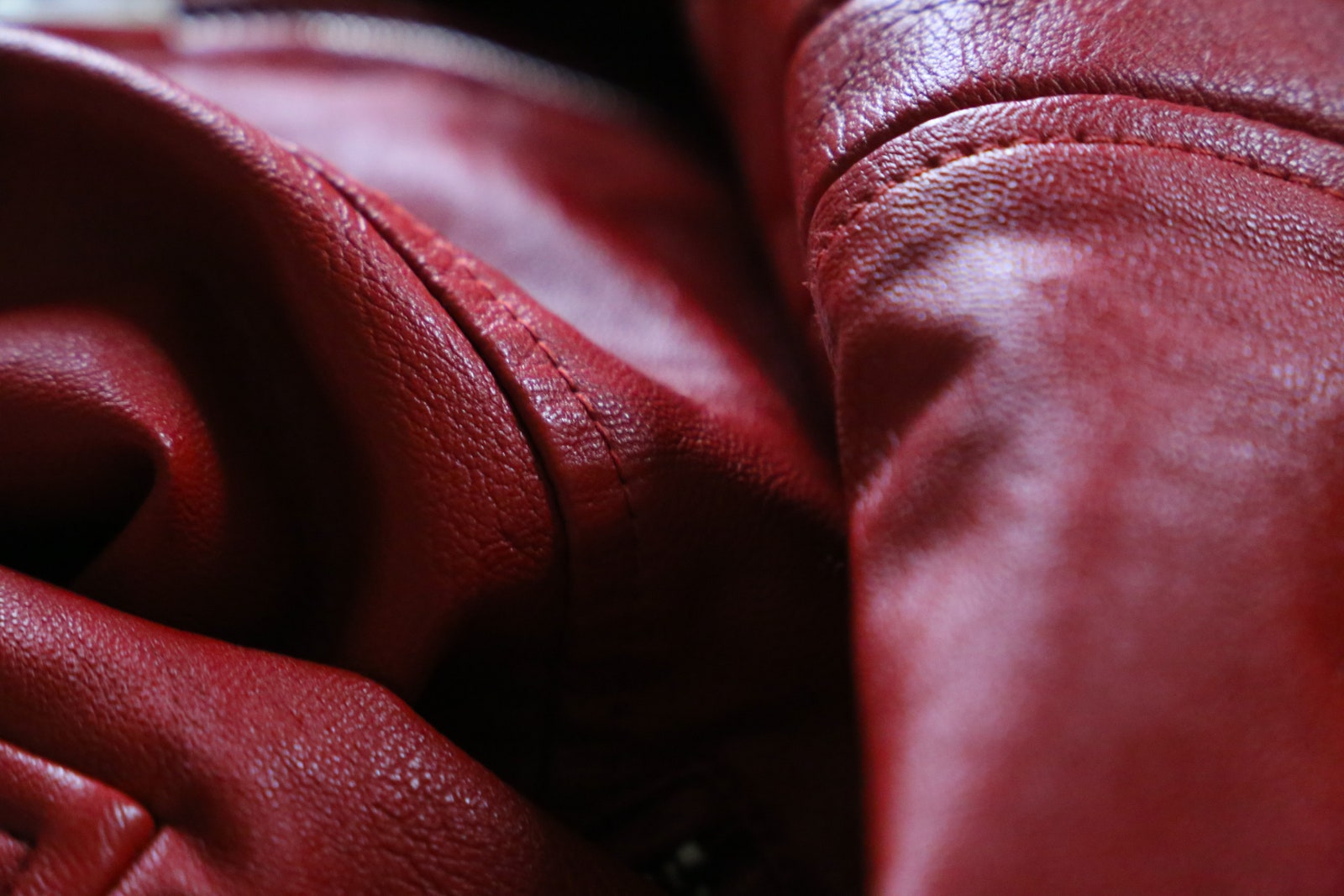If you do accidentally use something that is too oily (or find a grease stain), try applying a bit of baking soda to the spot (cornstarch can work too). Rub in a circular motion and let sit for a few hours as it absorbs the grease. Then wipe away with a soft cloth.
More Tips on How to Care for Leather
Now that you know how to clean leather like a pro, here are a few more tips on how to care for leather furniture so that it lasts a lifetime.
How to treat distressed leather
To treat specific distressed areas, find a treatment made for your type of leather. Pourny, for example, sells an Old World–inspired leather serum and cream, which can be applied with a cloth to soften the leather and smooth scratches, while Oulton recommends Leather Masters, which is good for most leathers (except nubuck) and protects against everyday soiling.
Regardless of what you use, a light hand is always a good idea. Find an inconspicuous area to dab a new leather cleaner. “Less is more when applying any product to leather,” Pourny says. “Test a small area first. For colored leather, be extra careful and know that any product will most likely darken the leather.”
Know that some leather is meant to look more lived-in
Aniline-dyed leather furniture, in which the dye penetrates the entire material, is not only durable, it’s actually meant to look lived-in, Oulton says. “Rather than covering and sealing the surface with a colored coating, we work dyes and waxes into the leather by hand. As a result, we feel like the furniture wears in and not out. It’s very easy to live with, and it develops a rich patina over time.”
Lay out furniture in a way that protects the leather
“In most cases, it is ambient conditions that will lead to the cracking of leather—extreme temperatures and lack of moisture,” Oulton says. “Placing a sofa right under your air-conditioning or next to a radiator or in front of a roaring fire is going to dry out the leather.” Sunlight can also have this effect, Pourney adds, so avoid putting furniture right next to a window or glass door, or hang light-blocking curtains.
Keep pets off leather furniture
Cats, and sometimes dogs, will use leather as a (very expensive) scratching post, so teach them to stay off the sofa. “I think this is the biggest cause of damage we hear of from customers calling the studio,” Pourny says.
If the leather gets cut or torn, turn to a professional for help. Don’t run the risk of damaging the leather further by trying to fix it—cleaning leather is a DIY job, but repairing it is not. “For large cuts, we recommend contacting a professional who can mix color and texture by applying heat, and make repairs to the leather,” Pourny continues.
Take leather items to a leather care expert—not a dry cleaner
If none of the above work, go to a respected shoe repair shop or leather care expert for help. “Even if it’s a bit controversial, avoid bringing your [piece] to your local cleaner, even if they advertise suede and leather care,” Pourny says. “I do not know anybody that had great luck with them, and the damage will be irreversible.”
Caring for pleather furniture
While many pieces of furniture may look like leather, it’s possible that they’re made from a synthetic, leather-like material called pleather (a portmanteau for “plastic leather”). In that case, the above advice may not apply, and caring for these pieces requires different tactics.
What is pleather, or fake leather?
Fake leather is manufactured by taking plastic, such as polyurethane or PVC, and treating it with various materials in a process that mimics the grain and feel of real leather. Among the alternative to traditional leathers and pleathers are plant-based leathers, which are also called eco-leather or vegan leather. In this case, the base material could be cork, cactus fibers, apple peels, mushrooms, pineapple fibers, or other sources, typically processed into a slurry and treated or layered with various chemicals (sometimes including plastics) to form a usable faux-leather product.

